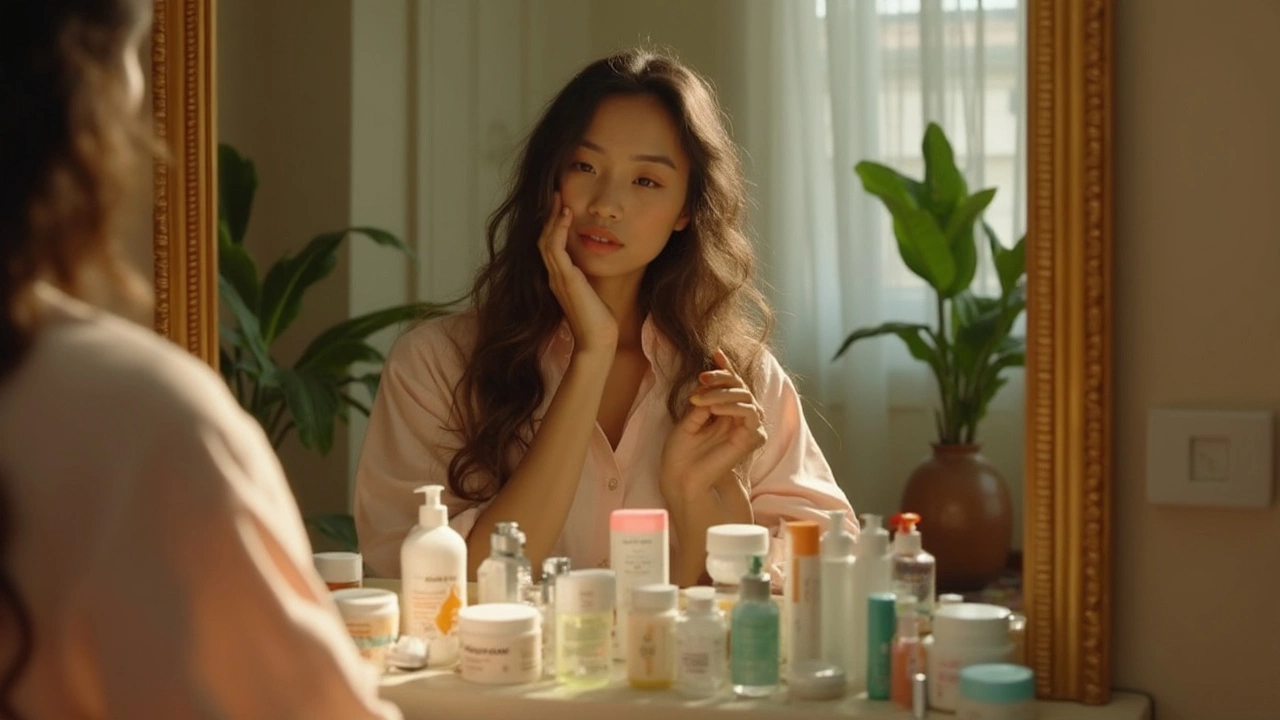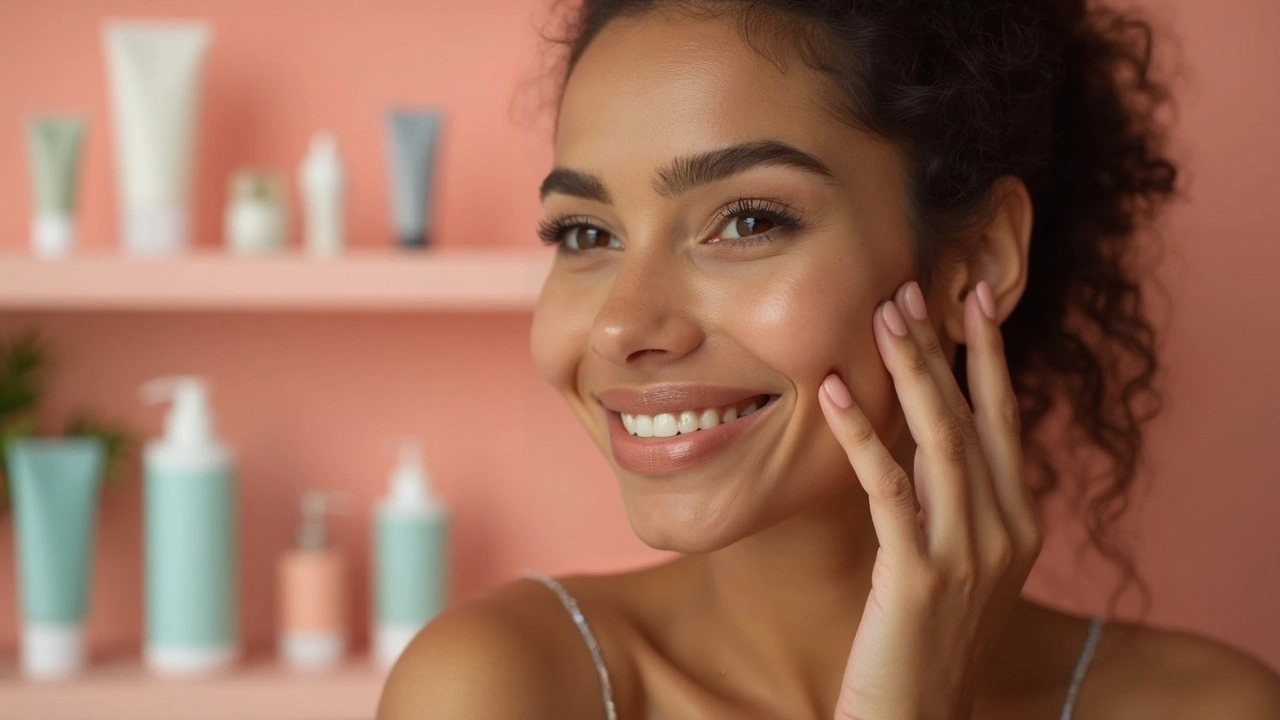
Ever stare at your bathroom shelf and think, “Am I using way too much stuff on my face?” You’re definitely not the only one. It’s easy to get sucked into the latest skincare trends and end up stacking serum on top of cream on top of toner. But here’s the thing: more doesn’t always mean better. Piling on too many layers can actually end up annoying your skin instead of helping it.
If you use too many active ingredients—like retinol, vitamin C, or even AHAs—at the same time, your skin can freak out. I’m talking breakouts, redness, irritation, or even flaky patches. Your skin is smart, but it has limits. When it’s overloaded, it can’t absorb all those goodies anyway, so you’re kind of just mixing an expensive cocktail that goes nowhere.
What’s the magic number for products? Well, it varies, but most dermatologists suggest you don’t need more than three to five simple steps: cleanser, moisturizer, sunscreen, and maybe a treatment or serum if you actually need it. Less to pile on, but way more impact for your skin.
- Why Do People Layer Skincare?
- What Happens When You Use Too Much?
- Signs Your Skin Is Overloaded
- How to Simplify Your Routine
Why Do People Layer Skincare?
People get into skincare layering mostly because there’s so much hype around achieving healthy, glowing skin. All those glossy ads, TikTok routines, and influencer reels make it seem like using more products means better results. The idea is that each step or product tackles a specific skin issue, like hydration, dark spots, or breakouts. It sounds smart, right? Tackle every problem, step by step. The Korean beauty scene especially popularized multi-step routines, some suggesting as many as 10 layers every day.
Using products in a certain order helps with absorption. Water-based serums, for example, are supposed to go on before thicker creams so they can sink in. Brands and experts often say that layering can make each formula more effective. Here’s a quick look at why these steps became so common:
- Target Many Concerns: People want to fight dry skin, acne, fine lines, and dullness all at once.
- Maximize Ingredient Benefits: Some think layering lets their skin soak in more actives.
- Trendy Influences: Beauty trends and online challenges fuel the multi-step routine craze.
- Brand Marketing: Companies hype up routines with matching lines, so buying more feels like the right thing to do.
Still wondering how big this trend is? A 2023 report from the NPD Group showed that over 65% of skincare users under 30 use four or more products every night. Marketers caught on fast, and now entire shelves are stocked with “step 1,” “step 2,” and so on.
| Age Group | Average Number of Skincare Products Used Nightly |
|---|---|
| Under 30 | 4.3 |
| 30-45 | 3.2 |
| 46 and Up | 2.6 |
So yeah, layering is everywhere—sometimes to fix real problems, but other times just because it’s become the “done” thing. The most important thing is figuring out what your skin actually needs, not just what everyone else is doing.
What Happens When You Use Too Much?
It might sound harmless to pack your face with layer after layer of product, but your skin can only handle so much. Once you cross that line, weird things start to happen. Your pores can get clogged, your barrier can break down, and suddenly, your skin's acting up in ways it never did before. Using too many active ingredients at once—think retinol, vitamin C, or exfoliating acids—can mess with your skin's natural balance pretty fast.
Dermatologists see this a ton lately, with people layering trendy products without checking if they really go together. According to the American Academy of Dermatology, too much skincare is one of the most common reasons behind unexplained breakouts and redness. Your skin needs time to adjust to one thing before adding more. When you pile them on, the actives compete instead of helping, or even cancel each other out.
Here’s a quick look at what can actually go wrong when you overdo your routine:
- skincare layering overload: Too many similar products (like several serums) can clog pores and trigger breakouts.
- Skin barrier damage: Overexfoliating strips away the protective layer, leading to sensitivity, stinging, and dryness.
- Wasted money: Your skin can't absorb endless layers, so a lot just sits there or gets wiped away.
- Ingredient conflicts: Some actives don’t mix and can cause reactions—like using retinol and AHAs right after one another.
Check out this simple table on the most common problems people run into if they use too much product:
| Problem | Percent Reporting |
|---|---|
| Breakouts | 43% |
| Redness/Irritation | 38% |
| Flaky Skin | 21% |
| Product Pilling | 30% |
Turns out, throwing everything at your face rarely ends well. The smarter move is tracking changes after each product and giving your skin a breather between new additions. You don’t want your face to be the testing ground for a science experiment gone wrong!

Signs Your Skin Is Overloaded
Sometimes, it’s easy to miss the signs that your face is waving the white flag. So, what does it actually look like when your skin says "enough already" to your skincare layering routine? Here’s what usually pops up:
- Redness and irritation: This is the biggie. If your skin suddenly feels hot, stingy, or you spot some angry red patches, that’s a red flag. Layering actives like retinol and acids can seriously trigger this.
- Breakouts or bumps: Maybe you’re not prone to acne, but now you’re breaking out—or you’re getting mystery bumps you never had before. Overloading can mess with your skin barrier and clog pores.
- Dry, flaky patches: Using too many exfoliators or actives can leave your face feeling tight and even start peeling. Skin that looks shiny but feels rough? That’s a common overload sign.
- Excess oiliness: Sometimes, your skin tries to defend itself by pumping out more oil. It thinks it has to protect itself—thanks to all the product chaos on your face.
- Stinging or burning: If products you’ve used forever suddenly burn or tingle, your skin barrier might be compromised. That’s your cue to pump the brakes.
If you notice one or more of these issues, you’re probably asking your skin to do too much. It’s not about toughing it out—it’s about dialing it back so your skin can recover and work like it’s supposed to.
How to Simplify Your Routine
Simplifying your skincare routine doesn’t just save you money—it also gives your skin a break. One of the biggest mistakes people make is thinking complicated always means better, but research says that sticking to basics can actually give you better, more consistent results. You don’t need a dozen products; what matters is using the right ones regularly.
Here’s a no-nonsense way to rethink your routine without sacrificing results:
- Start with a gentle cleanser. You want something that won’t strip your skin or leave it feeling tight. Look for words like “fragrance-free” and "for sensitive skin" if you’re unsure.
- Pick a moisturizer that matches your skin type. If you’re oily, go for a lightweight gel. Drier skin likes creams. Don’t overthink it.
- Always use sunscreen (at least SPF 30) in the morning. This one step gives you more bang for your buck than almost anything else. It protects against sun damage, which is one of the biggest reasons for early aging and irritation.
- If you have a true skin concern—like acne or dark spots—add one targeted skincare layering product. Think retinol, vitamin C, or a spot treatment, but only one at a time. Too many actives often makes things worse.
Focus on consistency, not quantity. Your skin needs time to adapt, so use your products regularly and give them at least a few weeks to show results. If you’re itching to try something new, introduce products slowly—one at a time—so if your skin reacts, you’ll know exactly what caused it.
And one last tip: your routine in the morning can be different from nighttime. Sunscreen in the day, a treatment product at night. That way, you’re not overloading all at once.
 Hair Care
Hair Care